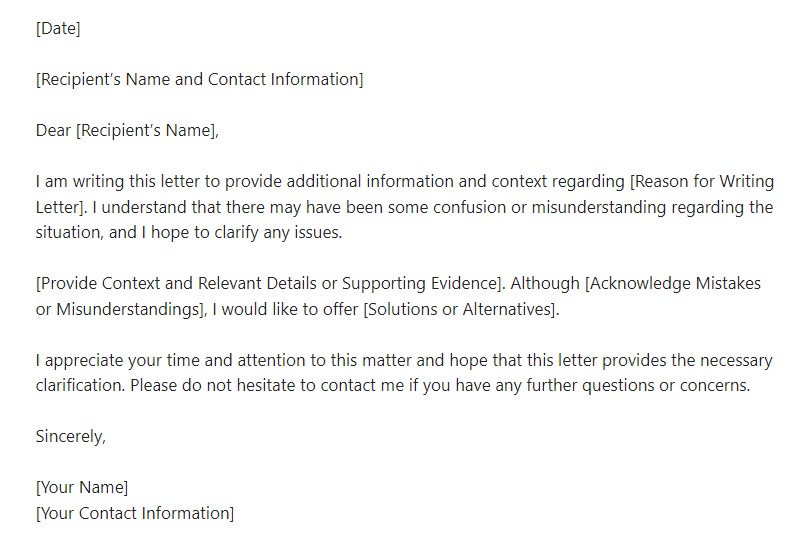An explanatory letter is a document that provides additional information or context about a particular situation or decision. It can be used in various contexts, such as in business, education, or personal matters. Writing an effective explanatory letter requires clear and concise language to convey the necessary information.
How to Write an Explanatory Letter:
1. Start with a professional header that includes the date and recipient’s contact information.
2. Address the letter to the appropriate person or department.
3. State the reason for writing the letter and provide a brief summary of the situation or decision.
4. Explain the context and provide any relevant details or supporting evidence.
5. Acknowledge any mistakes or misunderstandings and offer solutions or alternatives.
6. Conclude the letter by expressing your appreciation for the recipient’s time and attention.
7. Sign the letter and provide your contact information for any follow-up inquiries.
Explanatory Letter FAQs:
When should I write an explanatory letter?
An explanatory letter can be written in various situations, such as to explain a decision, provide additional information, or clarify a misunderstanding.
What should be included in an explanatory letter?
An explanatory letter should include a clear and concise explanation of the situation or decision, any relevant details or supporting evidence, and solutions or alternatives if necessary.
How should I address an explanatory letter?
An explanatory letter should be addressed to the appropriate person or department and written in a professional tone.
Sample Explanatory Letter:
[Date]
[Recipient’s Name and Contact Information]
Dear [Recipient’s Name],
I am writing this letter to provide additional information and context regarding [Reason for Writing Letter]. I understand that there may have been some confusion or misunderstanding regarding the situation, and I hope to clarify any issues.
[Provide Context and Relevant Details or Supporting Evidence]. Although [Acknowledge Mistakes or Misunderstandings], I would like to offer [Solutions or Alternatives].
I appreciate your time and attention to this matter and hope that this letter provides the necessary clarification. Please do not hesitate to contact me if you have any further questions or concerns.
Sincerely,
[Your Name]
[Your Contact Information]
